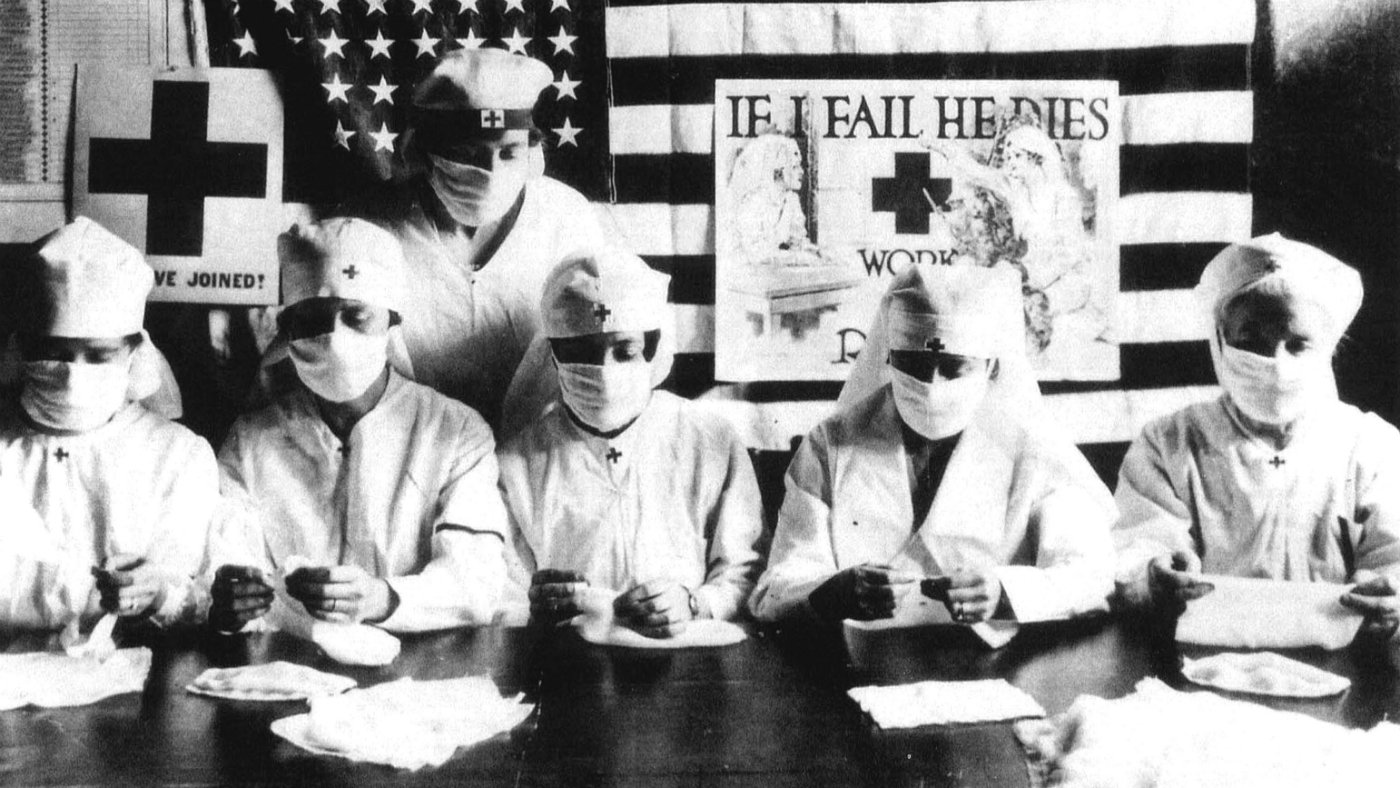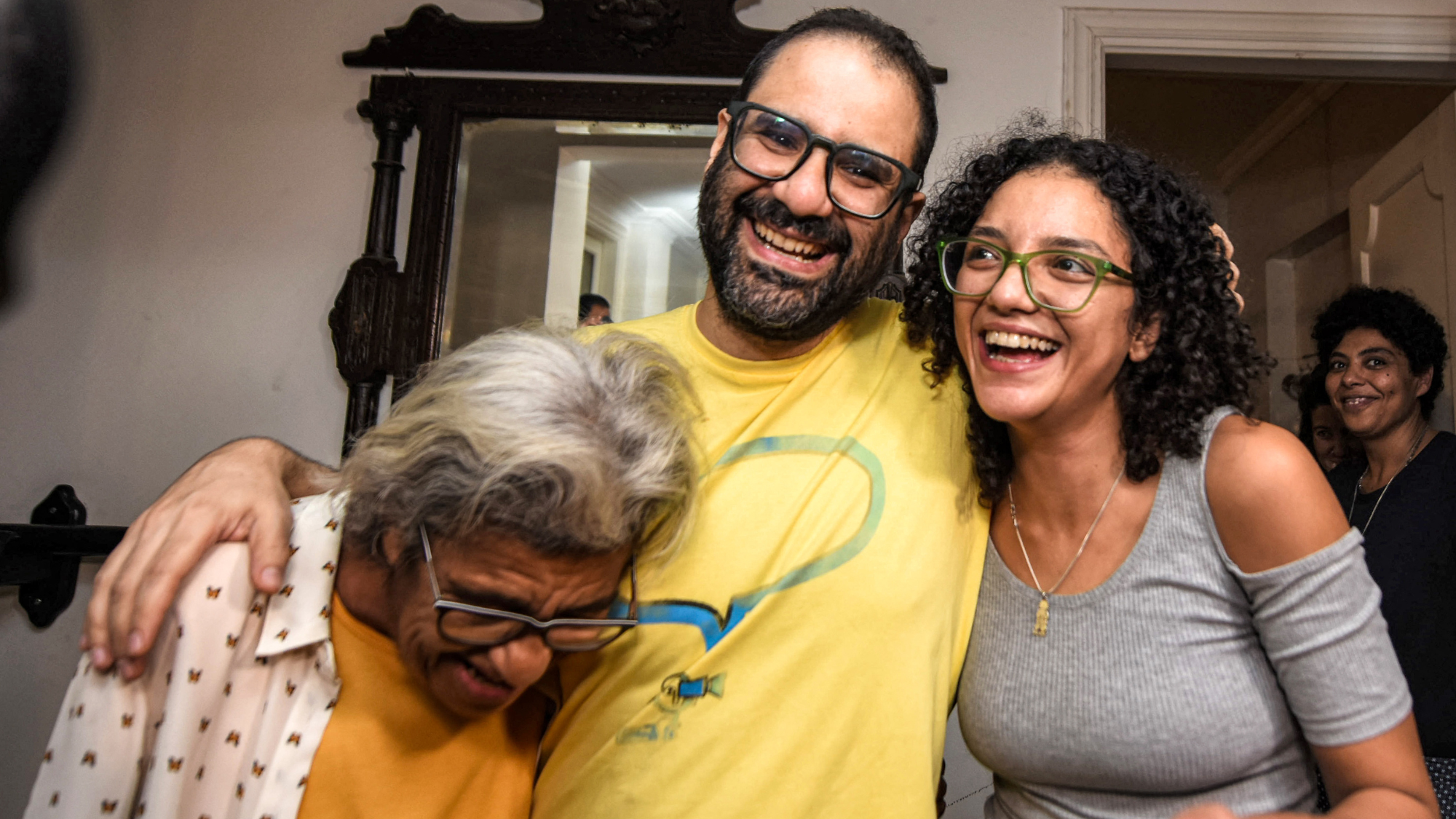Spanish flu: how not to deal with a pandemic
Coronavirus has reminded us of 1918 and the influenza that killed up to 100 million

More than 80,000 people have been diagnosed with the new coronavirus and officials are preparing for it becoming the world’s next pandemic.
Its rapid spread has directed attention to previous outbreaks and the lessons that might be gleaned from them.
Epidemics and pandemics used to be significantly more destructive than they have been in recent years.
The Week
Escape your echo chamber. Get the facts behind the news, plus analysis from multiple perspectives.

Sign up for The Week's Free Newsletters
From our morning news briefing to a weekly Good News Newsletter, get the best of The Week delivered directly to your inbox.
From our morning news briefing to a weekly Good News Newsletter, get the best of The Week delivered directly to your inbox.
Few have come close to the so-called Spanish flu of 1918, when 500 million people were infected and as many as 100 million killed by a brutal influenza outbreak at the end of the First World War.
As Martin Kettle writes in The Guardian, Spanish flu was a public event that “scorned all human frontiers” from “Alaska to Zanzibar”, striking the “rich and the poor, the young and the old, women and men, black and white”.
What was Spanish flu?
Flu, also known as influenza, is caused by a virus that is transmitted from person to person through airborne respiratory secretions. While seasonal flu constantly circulates and mutates, most people build up a level of immunity to it – but a major outbreak can occur if a new strain of influenza virus emerges against which the population has no immunity, Encyclopaedia Britannica explains.
A free daily email with the biggest news stories of the day – and the best features from TheWeek.com
The influenza pandemic of 1918-19 resulted from such an occurrence, this time as a result of strain called influenza type A subtype H1N1, the same strain which led to the swine flu outbreak in 2009.
It became known as Spanish flu, but as CNN points out, the outbreak did not originate in Spain. The main protagonists in the First World War – Germany, Austria, France, the UK – kept reports of the illness quiet, so as not to encourage the enemy. But “neutral Spain had no need to keep the flu under wraps”, says CNN. “That created the false impression that Spain was bearing the brunt of the disease.”
According to History.com, the first wave of the 1918 pandemic occurred in the spring and was generally mild. Sufferers typically experienced flu symptoms such as chills, fever and fatigue. They usually recovered after several days and the number of reported deaths was low.
However, the site adds that a second, highly contagious wave of influenza “appeared with a vengeance in the fall of that same year”, of which victims “died within hours or days of developing symptoms, their skin turning blue and their lungs filling with fluid that caused them to suffocate”.
It claimed the lives of more than 50 million people, with some estimates placing the death toll as high as 100 million, or as much as 5% of the global population at the time. As ABC News notes, the virus killed more people in 24 weeks than HIV/Aids killed in 24 years.
–––––––––––––––––––––––––––––––For a round-up of the most important stories from around the world - and a concise, refreshing and balanced take on the week’s news agenda - try The Week magazine. Start your trial subscription today –––––––––––––––––––––––––––––––
Why was it so devastating?
For decades, scientists were unsure of the origins of the pandemic, but 21st-century research suggests that it began at the British military base at Etaples, in northern France.
In a paper published in 2009 in the Journal of Molecular and Genetic Medicine, Anton Erkoreka says that this base, at which around 100,000 soldiers were housed in 12 square kilometres, was “situated near sea marshes with abundant migratory birds”, while nearby there were “many farms with pigs, ducks and geese reserved as food for the soldiers, and horses which were used as a means of transport”.
From here, the virus spread with unprecedented speed, first in ports, then spreading from city to city along the main transportation routes such as train lines.
The disease eventually reached almost every corner of the globe, with Encyclopaedia Britannica reporting that India is believed to have suffered at least 12.5 million deaths during the pandemic. The disease even reached distant islands in the South Pacific, including New Zealand and Samoa. In the US about 550,000 people died, while the UK saw nearly 250,000 casualties.
“Cruelly for a nation that had seen the flower of British male youth mown down by German guns, the majority were adults aged 20 to 40,” The Observer says. “The mortality was the inverse of most flu seasons, when deaths fall most heavily on the elderly and the under-fives.”
What did we learn from the Spanish Flu?
As Erkoreka notes, “many factors contributed” to the destructive power of Spanish Flu such as the “mixing on French soil of soldiers and workers from the five continents, the very poor quality of life of the soldiers, agglomeration, stress, fear, war gasses used for the first time in history in a massive and indiscriminate manner, life exposed to the elements, cold weather, humidity and contact with birds, pigs and other animals, both wild and domestic”.
He adds that “today, this combination of circumstances is not present and so it seems unlikely that new pandemics, such as those associated with the avian influenza or swine influenza, will emerge with the virulence which characterized the Spanish Influenza”.
CNN says that although few living people can recall the outbreak, we can “continue to learn its lessons, which range from the commonsense value of handwashing and immunisations to the potential of anti-viral drugs.
“Today we know more about how to isolate and handle large numbers of ill and dying patients, and we can prescribe antibiotics, not available in 1918, to combat secondary bacterial infections,” the broadcaster adds.
“Perhaps the best hope lies in improving nutrition, sanitation and standards of living, which render patients better able to resist the infection.”
-
 Alaa Abd el-Fattah: should Egyptian dissident be stripped of UK citizenship?
Alaa Abd el-Fattah: should Egyptian dissident be stripped of UK citizenship?Today's Big Question Resurfaced social media posts appear to show the democracy activist calling for the killing of Zionists and police
-
 Biggest political break-ups and make-ups of 2025
Biggest political break-ups and make-ups of 2025The Explainer From Trump and Musk to the UK and the EU, Christmas wouldn’t be Christmas without a round-up of the year’s relationship drama
-
 Why 2025 was a pivotal year for AI
Why 2025 was a pivotal year for AITalking Point The ‘hype’ and ‘hopes’ around artificial intelligence are ‘like nothing the world has seen before’